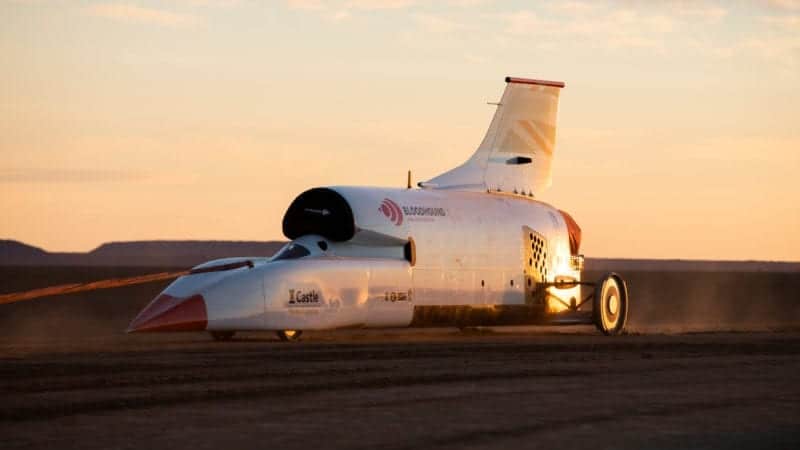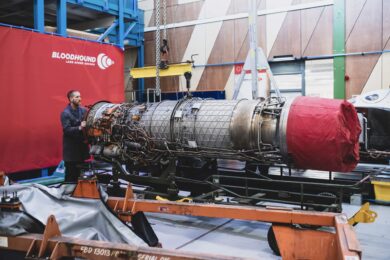In 2019, the car finally made it to South Africa, where it hit 628mph, exceeding the team’s goal of reaching 550mph. But to continue the project further, more funding is required.
With the global pandemic ongoing, a lack of forthcoming funds has pushed back the window for further running, originally set for the first half of 2021.
A spokesman for the Bloodhound LSR project told Motor Sport that until a vaccine had been widely distributed, the project is set to remain dormant until the next calendar year.
The next phase of the project will be to fit the car with a monopropellant rocket to bring the land speed record of 763.035mph set by the Thrust SSC into view. The rocket will add 120kN of power to the jet’s 90kN.
Running will take place in South Africa once again in the Hakskeenpan lake bed which will require thorough preparations.
A 250-metre wide and 10-mile long section of track must be cleared of any debris, which totalled 16,500 tonnes of rock from 22 million square metres of ground back in 2019 ahead of the team’s test run.


